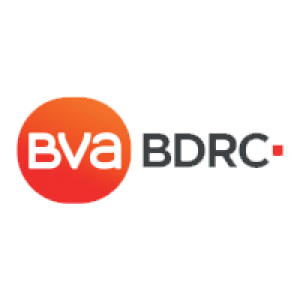International schooling has for a long time enjoyed a position of market strength, with more demand for schooling than supply of quality schools, as shown by their long waiting lists.
But the market is changing. With the reduction in expat numbers, more international schools opening and existing schools taking on more capacity, supply is rising relative to demand. Consequently, even the most sought after schools now run very active marketing campaigns and parent outreach programs. Positive word-of-mouth is the most powerful marketing channel, but it is apparent from the BVA BDRC New Parent Survey, parents go to a range of sources to help inform their decisions.
Online sources predominate: web searches, expat websites, comparison sites, and social media. Intermediaries play some role in finding the right school, e.g. 12% of parents had referred to a relocation agent or education specialist in their searches for schools.
Relatively few parents confess to have discovered their chosen school through advertising (5%), but generally, people downplay the role of advertising in their decisions. We see that over 70% of parents recall advertising from schools during their searches and recall of the schools targeting them specifically tends to be higher. For example, UK aligned international schools record higher advertising recall among UK expats, and a similar pattern is seen with Europeans and Americans for schools targeting them. Furthermore, advertising recall of their final chosen school is higher.
Most of the advertising recall of schools is via digital channels (73%), but offline advertising recall is also high at 43% for print and 33% for outdoor. Arguably, offline advertising is more effective as it is less cluttered – indeed when BVA BDRC asks parents for their specific recall of adverts, people tend to refer to those that they have seen within shopping malls, at MRT stations or on buses.
The role of innovation in schooling
When markets get competitive, the players need to get more innovative, and international schooling is no exception. Based on BVA BDRC’s New Parent Survey, from a list of 20 reasons for choosing the school, an ‘innovative approach’ to schooling was ranked fifth by parents. We also see an ‘innovative approach to learning’ as one of the main drivers of recommendation for schools.
As a multi-faceted product, there are many ways for schools to innovate. These can range from extensions to curriculums, different learning techniques, or activities & facilities that are not usually available in other schools.
The BVA BDRC survey shows that 40% of parents would like to see more teaching of ‘STEM’ (Science, Technology, Engineering, and Mathematics as a grouping) or ‘STEAM’, with the inclusion of arts. STEM & STEAM are not unusal; many schools offer them, but there are ways of further developing curricular and Extra Curricular Activities (ECAs) to demonstrate a point of difference over other schools.
Style of teaching is another area where schools can innovate, and this is not limited to structured versus ‘discovery based’ learning, but also the use of technology in learning, the method of student assessment, and even the way classrooms and classes are designed to encourage more engagement and interaction between teachers and students.
Each of these can serve to differentiate one school over another, but from our Mystery Inquirer program, we often see that the admissions officers find it hard to articulate how their school is different from others. These differences can be summed up in a school motto or mission statement, but even staff often forget what these are!
Click here to read this article on BVA BDRC






